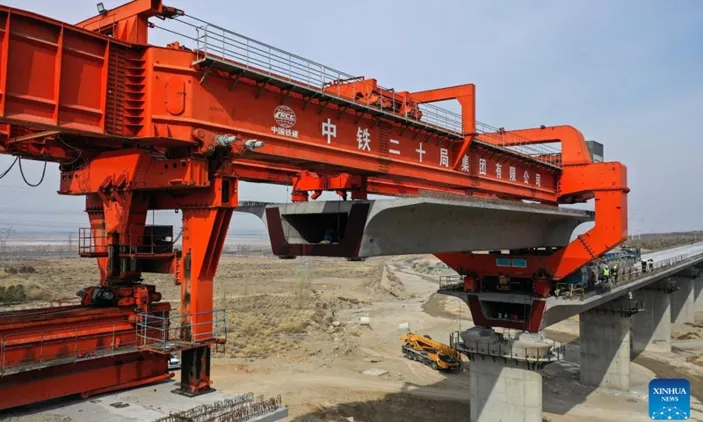China's Infrastructure Development Set to Boost Investment Soon

China is poised for a significant upswing in infrastructure investment, concentrating on high-speed rail and urban development initiatives to enhance economic stability. Recent reports highlight favorable conditions for an acceleration of infrastructural growth.
Experts noted that several major projects have seen considerable progress, hints of a renewed momentum for infrastructure development in the country. A pivotal event was the completion of the first railway tunnel across the Helan Mountain in Northwest China's Ningxia Hui Autonomous Region.
This newly established 8,792-meter tunnel forms an essential section of the Baotou-Yinchuan high-speed railway, a crucial component of China's extensive high-speed railway network, according to the China Railway Group.
In a separate development in Jinan, located in East China's Shandong Province, the world's largest-diameter underwater shield tunnel successfully concluded its excavation beneath the Yellow River. The project utilized the Shanhe tunnel boring machine, which boasts a diameter of 17.5 meters.
Data from the China State Railway Group revealed that fixed-asset investment in the railway sector from January to July reached 433 billion yuan, equivalent to approximately 60.3 billion dollars, marking a year-on-year growth rate of 5.6 percent. This trend suggests a fresh surge of growth potential for the country as it strives for economic recovery.
Moreover, ground has been broken for a major pithead coal-fired plant in Northwest China's Xinjiang Uygur Autonomous Region with a total investment of 17.3 billion yuan. This energy project is poised to contribute significantly, generating 20 billion kilowatt-hours of electricity annually.
In the first seven months of 2025, China's overall fixed-asset investment registered an increase due to robust growth in the manufacturing sector. The National Bureau of Statistics reported that total investment rose by 1.6 percent year-on-year, amounting to over 28.82 trillion yuan.
Investment in the manufacturing domain rose by 6.2 percent year-on-year, while infrastructure construction experienced a 3.2 percent growth, per NBS data. However, the overall fixed-asset investment growth was notably lower compared to the previous half-year.
Anticipated infrastructure investment is expected to accelerate in the coming months as economic strategies aimed at boosting growth are introduced to counter external pressures. Experts consistently recognize infrastructure investment as a critical stabilizer of macroeconomic performance.
Analysts forecast that such investment will see substantial growth this year, driven by a burgeoning project pipeline and the expedited allocation of funds, particularly special bonds.
Li Changan, an academic at the University of International Business and Economics, affirmed that as more projects progress into their construction phases, the anticipated contribution of infrastructure investment to overall economic investment would be significant.
Lian Ping, chief economist at the Guangkai Chief Industry Research Institute, stated that driven by supportive policies, non-real estate investment should expand steadily, with infrastructure investment benefitting from the issuance of special government bonds and continuous financial injections throughout the remainder of 2025.
Read These Next

Scottish Premiership Sets New Record for Match Attendance
Nanjing Olympic Sports Center saw a record 60,633 attendees at a Scottish Super League match, boosting local football culture.

Governance Changes and Financial Transparency at Huayu Cobalt
This commentary analyzes the recent governance and financial developments at Huayu Cobalt Industry Co., Ltd. as discussed in their latest board meeting, pointing out the implications for stakeholders amidst a changing market landscape.

Fu Shi Te's Revised Cash Management: Balancing Risk and Return
Fu Shi Te is enhancing its cash management strategy to optimize the use of idle funds post-IPO, balancing operational efficiency with financial risks in a volatile economic climate.
